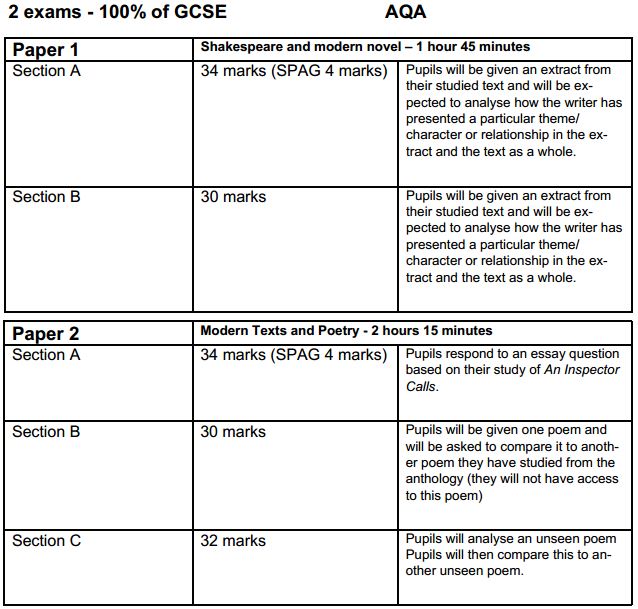Revise English Literature
To view the Academy Library's resources on English Literature 1. Right click this link and open our library page in a new tab. 2. Then click this link to browse our English Literature resources.
Know your full texts.
Ensure you can answer the following questions for all three texts studied: Shakespeare, nineteenth century novel, modern text.
Method (A02): Plot (AO1/AO3)
- 1) Write down up to ten pivotal moments from the plot in chronological order.
- 2) Consider why the writer chose this particular order of events.
- 3) Write down the pivotal moments in order of importance.
- 4) Consider why you think these events are the most/least important.
Message (AO1/AO3): Themes
- 1) Write down the key themes of the text.
- 2) For each key theme, write down the key events which demonstrate each theme.
- 3) For each key theme, write down what the writer’s message is at the beginning, during the course of and at the end of the text.
- 4) Consider how the message changes and why it changes.
Method (AO2): Characterisation (AO1/AO3)
- 1) Write down the characters in the text in order of appearance.
- 2) Consider why the writer chose to present the characters in this order.
- 3) Write down the characters in order of importance.
- 4) Consider why you think these characters are the most/least important.
- 5) Write down which characters are similar and which characters are different.
- 6) Consider why the writer does this – what does the writer want to say about people of a particular social group, background or personality?
- 7) For each character, make a list of each theme that they link to.
- 8) Consider what the character teaches the audience about the theme.
- 9) For each character, write down some sophisticated adjectives to summarise how they are presented at the beginning, during the course of and at the end of the play.
- 10) Consider how the characters change and why the writer has done this.
Power and Conflict Poetry
Some useful strategies:
- Ensure you know your poems. Primarily, use your poetry anthology and your class notes to revise these.
- Ensure you are aware of how the poems demonstrate ideas about power and conflict.
- Draw connections between the poems’ themes. Which ones are similar? How/why? Which ones are different? How/why?
- What is the most important line in the poem? Why?
- What is the structure of the poem? How does it begin and end? Are there any key changes/shifts? Why?
- Identify and revise two key techniques used in each poem to demonstrate power and/or conflict.
Useful websites
The following websites are useful for all three texts:
- www.massolit.io – All pupils should have the sign in information.
- https://getrevising.co.uk/resources/level/gcse
- www.sparknotes.com
- revisionworld.com
- GCSE-English.com (channel available on You Tube.)
- A useful article on how to revise for English (and other subjects): https://www.teachwire.net/news/yes-you-absolutely-can-revise-for-english-gcses-heres-how
- A useful article on Literature character revision: https://www.teachwire.net/news/delve-deeper-into-gcse-texts-by-studying-secondary-characters
- Pupils can also download the app Gojimo which offers a range of revision resources and quizzes.
- GCSE pod (available through the school website.)
Revision Guides
Useful revision guides are all available on Amazon or they can also be ordered through the school:
- Snap revision/workbooks (Collins)
- York Notes
- CGP Revision cards

 Hamstead Hall Academy
Hamstead Hall Academy